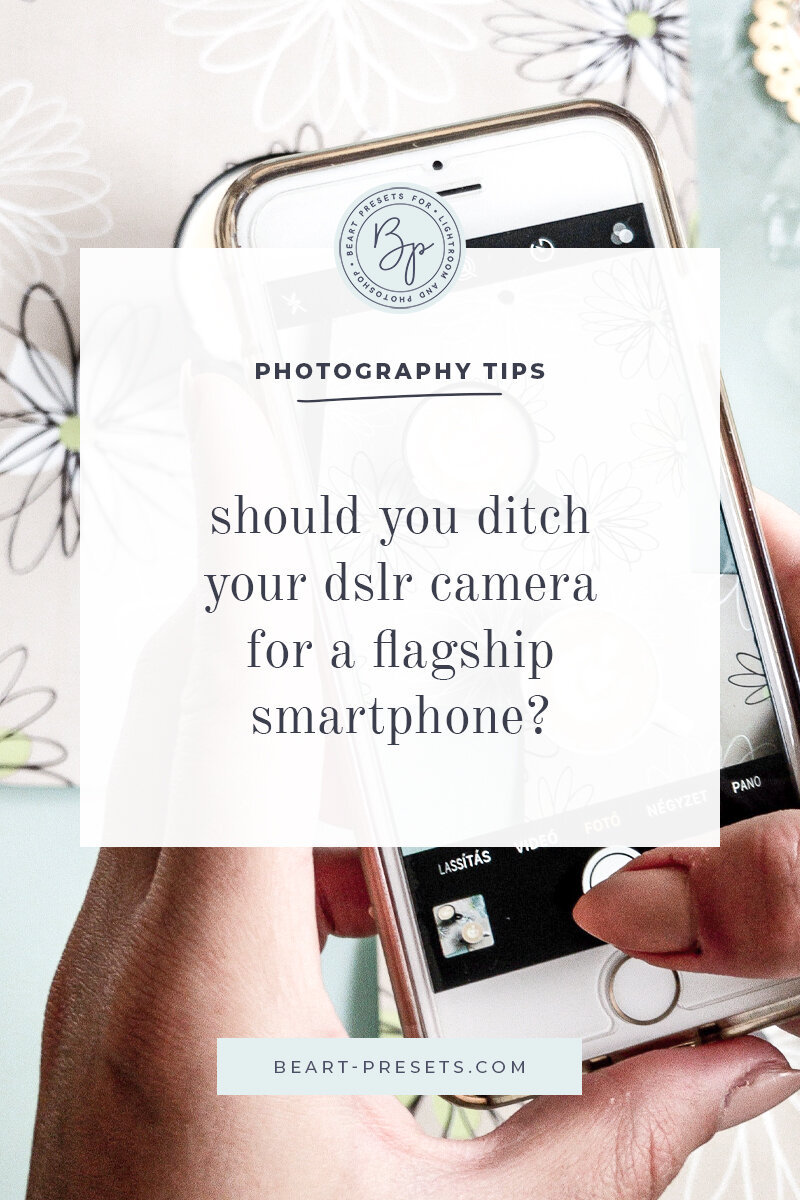Should You Ditch Your DSLR Camera for a Flagship Smartphone?
Older photo-enthusiasts may remember the revolutionary transition from film to digital; the concerns and doubts about the quality of the photographs from digital cameras as red rooms and photo studios became obsolete.
In the end, the concerns were all put to rest rather quickly after the digital revolution commenced. Now, we see a significant step forward happening with smartphone cameras. Although flagship smartphones were perfectly equipped for taking outstanding photographs in the last five years, it would’ve been not easy to make a compelling case to use smartphones, even flagship ones, for professional photography.
This is all changing with the next generation of smartphones. For the past three years, people have noticed that smartphones are hardly changing except for a few tweaks here and there. Smartphone’s core features were perfectly suitable for what people use smartphones, to begin with – occasional photos, apps, mobile games, and calls. Incremental upgrades in terms of more RAM, more storage, faster CPUs, and GPUs were not very exciting, given that an average user would hardly notice the difference for their everyday smartphone use.
However, new smartphones with multiple cameras further expand the concept of a smartphone as an all-in-one mobile platform. The first inkling of this trend became apparent in 2017, with the Light L16 smartphone produced by a completely unknown company.
Ultimately unsuccessful, this smartphone with 16 integrated cameras foretold the things to come. Specifically, the key technologies employed in future smartphones:
Computational photography – instead of having specialized bulky cameras with massive lenses, smartphones could produce DSLR-level of photo quality thanks to the CPU binding individual photos coming in from each camera, using depth data as the framework for blending them into a single superb photo.
Optical zoom equivalent to a mid-sized binocular and massive digital zoom.
Advanced sensors are offering high resolutions.
Light L16 project was the first one demonstrating it could be done. Unfortunately, the company behind it lacked the resources to flesh it out fully. Nonetheless, when the software worked as expected, it was clearly a game-changer.
Within a compact form of a smartphone, the Light L16 offers the capability and zoom range of a professional camera with 28-150mm lenses. Such a thing was considered impossible previously, with even the most expensive flagship smartphones.
Here is the size comparison to understand how important this milestone was:
From top to bottom: FujiFilm X-T2 vs. Light L16 vs. Sony RX100mk5
Taking the cue from the Light L16 project, well-established smartphone companies with practically infinite research, software, and tech resources have continued to carry the torch for computational, multi-camera smartphone photography.
You will see the benefits of that tech with the following recent and upcoming smartphone models. Most of them settled for three or four cameras, but some manufacturers offer 6 cameras, like the Nokia 9 PureView. LG registered a patent for a 16-lens camera in 2018. Therefore, as competition heats up, you will see more smartphones with more cameras shortly.
At the current date, you can count on these smartphones to easily supplant your professional DSLR camera:
Samsung Galaxy S20 Ultra – 5x optical zoom, 100x digital zoom, 108MP main camera, while telephoto camera offers 48MP, and the ultrawide one 12MP. Plus, the 40MP + 40MP front camera.
Huawei P40 Pro – 5x optical zoom, 50x digital zoom, 50MP main camera, 12MP telephoto camera, 40MP ultrawide camera. The front camera is 32MP.
OnePlus 8 Pro – 3x optical zoom, 30x digital zoom, 48MP main camera, 8MP telephoto camera, 48MP ultrawide camera. The front camera is 16MP.
Xiaomi Mi Note 10 – 2x optical zoom, 5x digital zoom, 108MP main camera, 12MP telephoto camera, 20MP ultrawide camera. 32MP front camera.
iPhone 11 Pro – 2x optical zoom, 10x digital zoom, 12MP camera, 12MP telephoto camera, 12MP ultrawide, and 12 MP front camera.
Of course, all of them have optical image stabilization (OIS) and all the flagship features you can expect from phones costing up to $1000. Additionally, we all know that the megapixel count doesn’t equal image quality, but in this class, you can use the MP number as an accurate proxy to tell you what to expect.
No matter which one you choose, you can safely count on these phones to deliver professional-grade photography and video-recording capability. Something we could not say with ease just a few years ago. Thinking back, it was predictable that large camera lenses could be supplanted with computational photography, i.e., advanced AI algorithms seamlessly constructing an image from multiple angles and cameras.
By 2025, smartphones will become incredible mobile all-in-one platforms, even surpassing the vision of famous sci-fi authors. The foldable ones should even offer a powerful alternative to tablets, office work stations, and gaming.
If someone were to tell you, “do my homework,” all you would have to do is reach for the smartphone filled with smart apps. Not to mention the upcoming features such as 8k resolution at 60 framerate video recording, super slow-motion, and more AI integration to further boost the raw hardware capability.

















